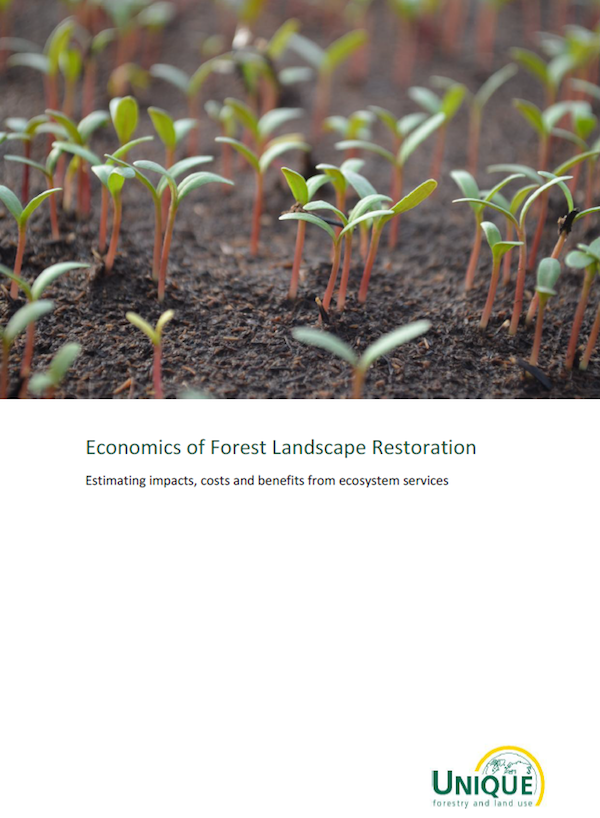Economics of Forest Landscape Restoration: Estimating impacts, costs and benefits from ecosystem services
October 2019

Building off of IUCN and WRI's Restoration Opportunities Assessment Methodology (ROAM), Initiative 20x20 partner Unique Forestry and Land Use has developed an easily applicable, customizable economic framework to evaluate the costs, benefits, and impact of forest landscape restoration (FLR).
Consisting of standalone modules and methods, it offers both private and public actors differentiated means of estimating values. Tailored cost-benefit analyses can help a variety of different target groups in their decision-making: from farmers and agribusinesses to local and national level governments.
This framework consists of a straightforward, four-step process. It provides guidelines and tools for each step: setting the scene, data collection, modeling costs and benefits, and analysis of results. The methodology complements ROAM and other restoration opportunity tools, e.g. by providing a cost-benefit analysis of the opportunities identified during a preliminary assessment.
It can be applied as part of a restoration opportunity process, once FLR activities have been identified and mapped, but also as a stand-alone decision making tool. The results will allow decision-makers to compare the trade-offs between alternative FLR investment scenarios, and to inform land use planning.
This study is supported by the GIZ International Forest Program (IWP) with funds from the German Federal Ministry for Economic Cooperation and Development (BMZ).